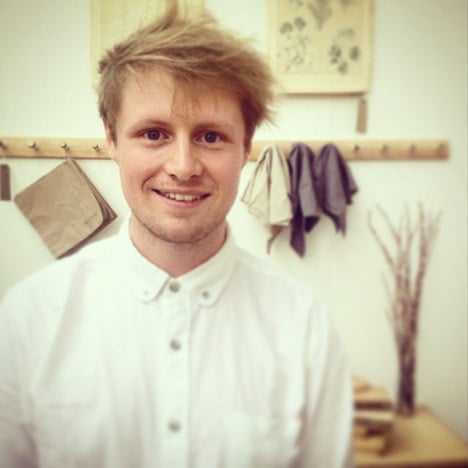
Using traditional crafts in design is not "sentimental" says Sebastian Cox
Interview: neglected techniques represent a new set of opportunities says Sebastian Cox, one of a number of young designers that are championing the revival of traditional crafts in the UK.
Cox is establishing a reputation as an up-and-coming name in the design industry thanks in part to his ongoing collaborating with Benchmark, the wooden furniture manufacturer co-founded by Terence Conran.
He has also recently produced a number of collections using traditional techniques and coppiced hazel – a byproduct generated from the sustainable management of woodland that has been in use for centuries.
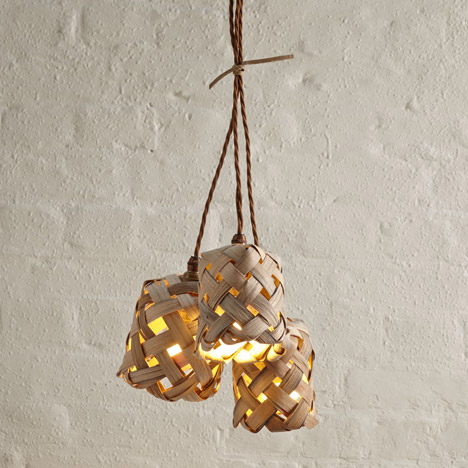
According to the London-based designer, a renewed interest in craft in contemporary manufacturing will help retain skills but also offers designers different ways of working with materials.
"I'm not being sentimental, or nostalgic and sad, about the idea that these skills will be lost if not passed on," said Cox. "I get excited about the prospect of finding a new – to me, or to contemporary design – set of materials or techniques to learn and draw inspiration from."
Earlier this week, the UK's Crafts Council revealed that craft skills contribute £3.4 billion to the British economy – a figure that was significantly larger than expected.
Cox said craft products could appeal to a wide audience of potential consumers.
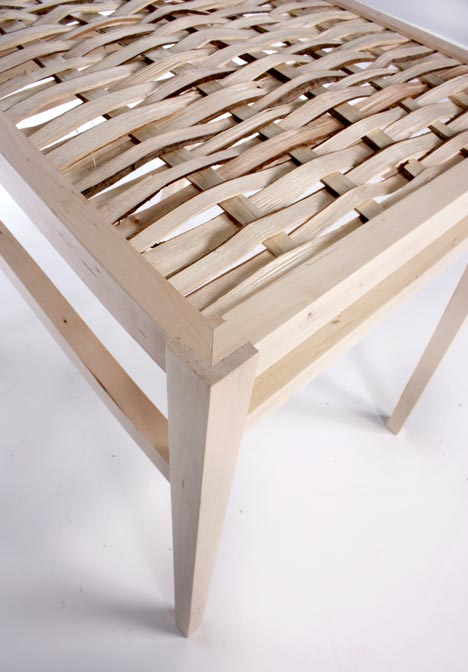
"One of the things that unite us is our ability to make," said Cox. "If we can develop a product that possesses subtle evidence of craft, then I believe it resonates with a customer's primitive maker urges. As a result the customer will enjoy that thing all the more, and everyone has enjoyed keeping it out of landfill for longer."
Cox was one of 10 emerging designers commissioned to create wooden pieces for established figures in the architecture and design worlds as part of this year's London Design Festival. As well as bespoke commissions like this and limited-edition pieces, Cox said that there was potential to translate old methods into more "democratic" mass-produced design.
"I believe in looking both forwards and backwards at once," said Cox. "We can learn so much from the past that is useful to take forward, especially when thinking about a sustainable future."
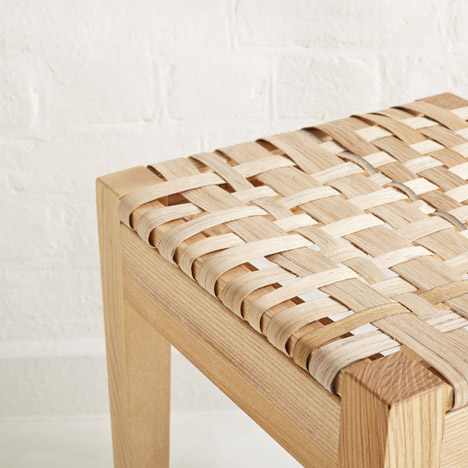
Cox's latest collection was produced in collaboration with Lorna Singleton, one of the last practitioners of a traditional British woodworking technique known as swilling.
Commissioned by the New Craftsmen, a shop in London dedicated to selling craft products, the furniture is made out of oak that has been boiled and cleft to a thickness of two or three millimetres. These strips, known as swill, are softened by soaking and then woven into a lattice in a method that is unique to Cumbria, an area in the north of England.
"I was asked to mentor Lorna by the National Coppice Federation. I hadn't heard of swill before, and she came down from Cumbria on the train with a bundle of swill," explained Cox.
"To see a piece of wood that could be wrapped around your finger, and hold many kilograms of weight at only millimetres thickness, I was in awe."
Read the edited transcript from our interview with Sebastian Cox:
Ross Bryant: Why do you think consumers are interested in craft?
Sebastian Cox: Simplistically speaking, I think that craft represents engagement with objects and materials. Many of the environmental problems we face come from the fact that people dispose of things sooner than they should. Anything that can engage people with the things they own more, and postpone that disposal is important. Added to which, as Homo sapiens we're all makers. One of the things that unite us is our ability to make. So if we can develop a product that possesses subtle evidence of craft, then I believe it resonates with a customer's primitive maker urges. As a result the customer will enjoy that thing all the more, and everyone has enjoyed keeping it out of a landfill for longer.
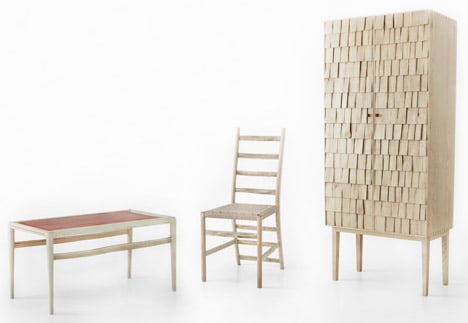
Ross Bryant: How are you trying to change the way we maintain and use the British woodlands?
Sebastian Cox: I want to use good design to give our trees an economic value.
We have 2.8 million acres of unmanaged woodland in the UK, which is a hugely undervalued resource, right on our doorstep. We shouldn't rely on government subsidies to keep woodlands managed; we should turn that timber into a desirable commodity and make woodland management good business.
In order to for this to happen, we need a small shift in perspective from consumers, which I'm sure is entirely possible. I'm trying to show people how beautiful and exciting our native hardwoods are; they might not be all the same colour and have uniform grain patterns, but that's part of the charm.
People have started to accept misshapen fruit or vegetables, and started to ask the supermarkets to offer more British-grown produce, and I believe people will gladly begin to do the same with their wooden objects too. I want to make this transition in consumer behaviour as appealing as possible with beautifully designed and made things.
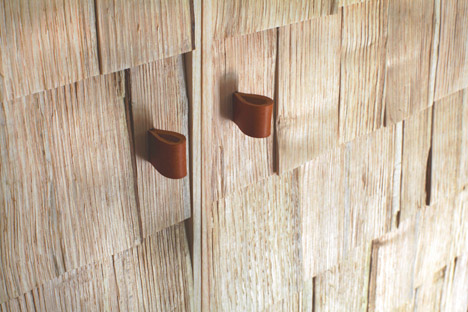
Ross Bryant: Is this a sustainable model that could be implemented on a much larger scale?
Sebastian Cox: We harvest hazel from a small, overstood wood in Kent. We do it on a very small scale, but the impact in that wood is already measurable; there's noticeably more wildlife there.
With my Chestnut and Ash range I developed with Benchmark, we found a business that coppices on a much larger scale for the fencing industry. It's the most astonishingly efficient company that creates an incredibly healthy and diverse habitat of 900 acres, while making and selling 11 linear km of fencing in a week. Coppicing can be scaled up, and the more you coppice a stool (the stump and root system of a tree), the straighter and more consistent the crop will grow. It's an ancient process that's ideal for modern efficient resource procurement.
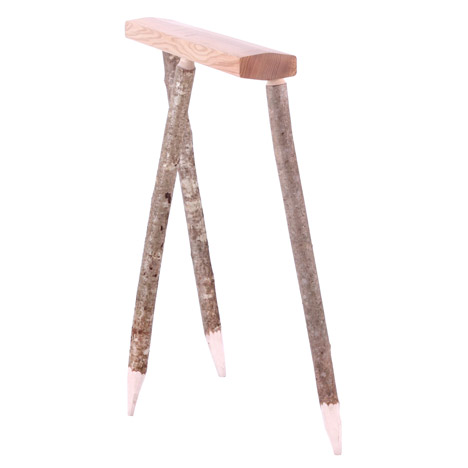
Ross Bryant: What is the future for craft and makers in the design industry? Can products be mass-produced and affordable for the mass market?
Sebastian Cox: Coppiced products can be made for the mass-market. It's a self-replenishing material that grows quickly, abundantly, and in every county in the UK. It's always been really important to me to be imaginative with the manufacturing process to keep the costs down as much as possible. Within my business, and the work we've been doing with Benchmark, we're getting better and I have no doubt that with enough scale we could make more democratic products.
In the UK we have a good amount of timber growing that has little economic value. We import 90 per cent of the timber we use, and much of our forests are un-harvested, or 'overstood' meaning they are turning a little wild.
Last year the State Of Nature report told us that since the Second World War woodland cover in the UK has gone up, yet biodiversity has gone down. We need to get used to the idea that the sound of chainsaw in a British wood is mostly a good thing, and we need to see value in those not-so-straight, not-so-perfect trees.
One of the things that I'm trying to overcome is the idea that timber is only useful in wide, straight, uniform boards. Most of our standing timber hasn't been grown like that, so we need to re-think our manufacturing processes and or re-think our values around timber.
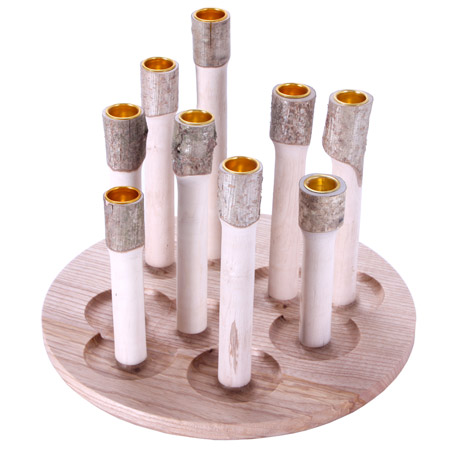
Ross Bryant: Is the craft revival a British phenomenon?
Sebastian Cox: It's difficult to comment on what's happening internationally. We have a really deep and rich heritage of rural crafts in the UK, and I'm sure many of them cross-pollinate with other countries. For example, I think that the recent increase in interest in green wood spoon carving has been helped by the affordability of Swedish carving knives and axes. I'm sure spoon carving is just as popular over there and so I would presume that there are pockets of interest in green woodworking springing up in much of Europe and the US.
Ross Bryant: Can you explain what swilling means?
Sebastian Cox: Swill is cleft, boiled oak. Cleaving is the controlled splitting of a piece of wood along its grain and swill is cleft with a knife down to an incredible 2-3mm in thickness. Because the material is cleft it is exceptionally strong for its relative thickness, as opposed to sawn strips of timber, the fibres of the tree follow the entire length of the piece of swill, making it more like rope than wood. Another fantastic property of this amazing material is that it can be bent into tight curves, because the boiling softens it so much.
With the products we developed in the Swill collection I wanted to exploit the properties as much as possible. For example when we weave a bench, the swill is fed through the ash frame and doubled back around the top bar before being folded back on itself again into the sub-frame. We then weave swill tightly in the opposite direction to keep the whole thing under tension. When we finish the benches they are so tight they almost have a drum sound.
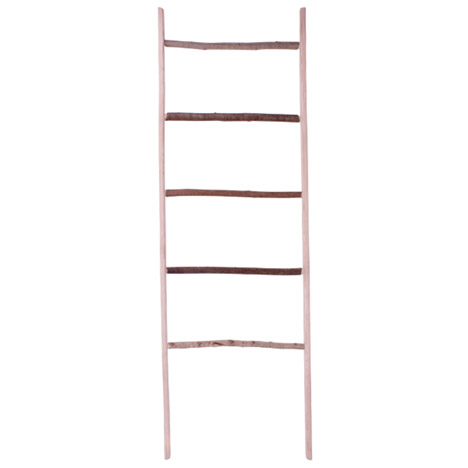
Ross Bryant: Can you tell us the story of how you came to work with Lorna Singleton?
Sebastian Cox: I was asked to mentor Lorna by the National Coppice Federation. I hadn't heard of swill before, and she came down from Cumbria on the train with a bundle of swill. The material and her skill captivated me.
Essentially, my way of designing involves exploring the properties of a material at the workbench, and then finding an appropriate contemporary application for that material or technique. So to see a piece of wood that could be wrapped around your finger, and hold many kilograms of weight at only 3mm thickness, I was in awe.
Before coming down to London, Lorna asked me if I had anywhere to soak her swill, 'Ideally a river, although that's probably not possible'. I said that I was sure we could find somewhere, not revealing just yet that my workshop looks out onto the river Thames at Woolwich, where the river is a little less than half a mile wide. I did wonder if we were the first people to soak swill in the Thames?
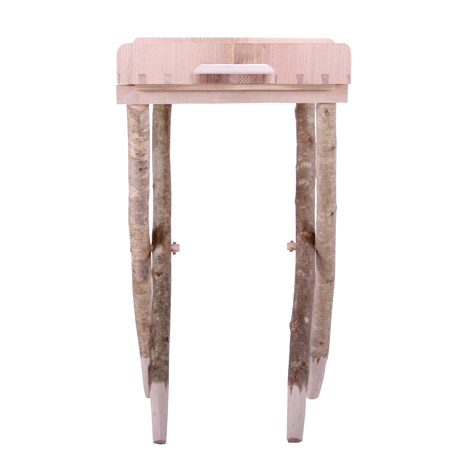
Ross Bryant: Can you briefly talk about the history of the swilling technique?
Sebastian Cox: Original swill baskets were utility baskets, found only in Cumbria. They were used for everything from carrying coal to food, and were strong and versatile. I suppose in some ways it was the vernacular basket of the North West, much like the Sussex Trug in the South East. It's thought that the word swill comes from when cockle-pickers used the swill baskets to "swill" around the silty water.
The woodland around the Lake District is rocky and harsh, making it ideal growing conditions for oak, which is why that is the timber of choice for the baskets. There's something very appealing about the way those baskets are made, which links directly to the climate and geological conditions of the area.
Simply, the production of swill baskets declined rapidly following the Second World War because other materials, like plastic, could be produced more quickly and cheaply. So as with many things, the craft was lost. This is the case with so many other rural crafts.
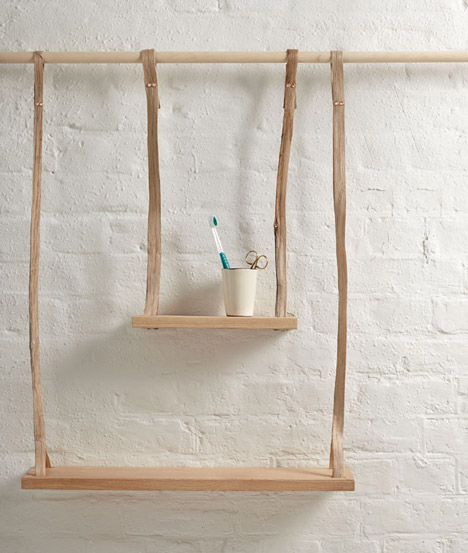
Ross Bryant: Why are you so keen to revive older crafts?
Sebastian Cox: I think we can learn so much from traditional craft techniques and materials. I'm not being sentimental, or nostalgic and sad, about the idea that these skills will be lost if not passed on. I get excited about the prospect of finding a new –to me, or to contemporary design – set of materials or techniques to learn and draw inspiration from. I believe in looking both forwards and backwards at once. We can learn so much from the past that is useful to take forward, especially when thinking about a sustainable future.